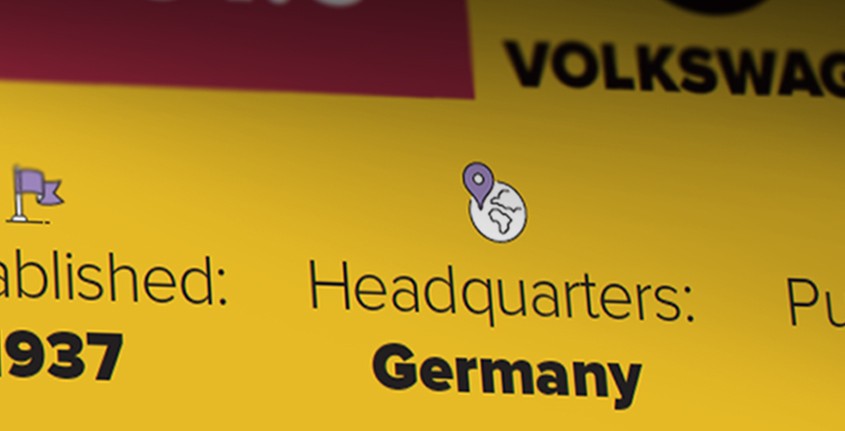Building a Future for the Enterprise
“The best way to predict the future is to create it.” Management guru Peter Drucker’s words resonate in this volatile era of breakneck innovation. Good CEOs know exactly what he meant—and most likely, they rue the fact that daily duties and challenges crowd out what they know they must do and can uniquely do. Every day they feel the tyranny of the urgent; creating the future never makes it to their calendars.
Part of this disconnect is understandable: Humans are primed to constantly assess close threats and opportunities, and this results in small changes through an incremental, iterative approach. As they climbed the ranks, executives got used to, well, executing. Good executives are master problem-solvers. They solved problems left and right and did not spend time thinking, “What am I building here?” They were not taught to contemplate the unimaginable or create the future. It therefore seems foreign and overwhelming. It would be a rare business school that teaches strategy formulation as a creative endeavor.
We recently attended the Fortune and Time Global Forum in Rome with top executives from among the largest companies in the world, talking about how business might solve some thorny issues facing the globe today. The main obstacle to their companies making the difference they are capable of? The nearsighted cycle of quarterly earnings was the consensus among these powerful executives.
In a better business world, senior management would be working on the present, while the CEO and her/his team focus on designing and building the future. In fact, we say that the executive function is designing a proprietary future for the enterprise, enrolling the people who are the enterprise in that future as their future and then providing the environment and resources for them to realize that future.
Moreover, trying to predict the future stifles creativity, one of the single most important capabilities a C-suite can possess.
However, in keeping with the more-immediate threats-and-opportunities framework and what they were taught in business school or by watching their predecessors, most leaders are bound by the limiting assumption that some predetermined future exists to be “figured out.” The truth is that trying to read tea leaves is a waste of time. As Peter Drucker wrote, “Trying to predict the future is like trying to drive down a country road at night with no lights while looking out the back window.” Moreover, trying to predict the future stifles creativity, one of the single most important capabilities a C-suite can possess.
Drift Versus Creativity
For most people and at most companies, the future is viewed as a simple extension of the present, which is an extension of the past. As such, there is no real opportunity for major strategic breakthroughs. An executive or a business will likely get smarter, better and faster over time at what is already being done, but this is ultimately the same work, just improved.
 This iterative, risk-averse mindset came through loud and clear in Insigniam’s most recent Executive Sentiment Survey. We found that most executives do not value heavy R&D investment as a way to create competitive advantage, even though new product sales are a key revenue driver. It seems most companies would prefer to rely on minor variations to proven products rather than assume the risk inherent in Horizon 3 or 4 innovations.
This iterative, risk-averse mindset came through loud and clear in Insigniam’s most recent Executive Sentiment Survey. We found that most executives do not value heavy R&D investment as a way to create competitive advantage, even though new product sales are a key revenue driver. It seems most companies would prefer to rely on minor variations to proven products rather than assume the risk inherent in Horizon 3 or 4 innovations.
Of course, R&D spend is not a perfect reflection of a company’s commitment to innovation. When Apple came up with the Mac, IBM was spending at least 100 times more on R&D than the scrappy upstart. But failing to target money for research can be a symptom of larger corporate immobility. Executives know innovation is critically important to the health of their companies, but they are stuck: Some 57 percent surveyed told us they are not doing well with efforts to spread innovation throughout the enterprise, not doing enough or still trying to figure it out. The remaining 43 percent think they are doing just OK.
Every organization has inertia, an organizational drift—just like, at first, a ship will continue to drift for a distance when its engines are shut down. A big company drifts due to years of capital investment, brand building, restructures and corporate culture. The status quo tends to continue without strong executive intervention (or an external disruption). Without creative leadership, an enterprise will drift along believing tomorrow will resemble today with a few changes. Its people will keep doing what they are already doing.
Jennifer Mueller, a social psychologist and professor at the University of San Diego School of Business, has researched this conundrum. She found that even while people aspire to creativity, they routinely reject creative ideas in the face of uncertainty. It is ironic that the very asset we should rely on to get us through periods of turmoil and ambiguity is the one we flee from at those times.
Embrace Discontinuity
The million-dollar question is, then: How do we move past our human wiring for certainty and predicting the future to embrace creativity and make great leaps that can transform our business?
First, we must accept that the future is inherently unpredictable. Share on X The very nature of the future is that it is largely unknowable. We cannot figure it out. The theoretical physicist Max Planck posited that time is discontinuous: One moment is separate from and unrelated to the next.
We have all seen discontinuous events in our lifetimes: Nick Leeson, a 28-year-old derivatives trader, single-handedly brought down Barings Bank, one of England’s oldest financial institutions. Arthur Andersen was one of the largest, most reputable accounting firms in the world before the Enron scandal exploded. Lehman Brothers was the fourth-largest investment bank in the United States until it collapsed overnight. When you consider history, it makes far more sense that the long-term future will be discontinuous—unfathomable, really—rather than more of the same. But our brains are wired to believe that what is here today will be here tomorrow with regular, known rates of change. In fact, a current theory of the workings of the neocortex is that it is continuously predicting what threat might be right around the corner.
Once we acknowledge that history’s pattern contradicts the way organizations tend to think about the future, leaders can begin to challenge naive assumptions. In our experience with strategy innovation, as many as one-third of those assumptions are proven to be limiting or just flat wrong. Trying to predict the strategic future is chasing a chimera and sure to be frustrating, if not a waste of extremely valuable executive time.
Steering your company ahead is a creative act—the corporate equivalent of writing poetry or painting a picture, if you will. You must step outside your current business model to locate a strategic frontier, where robust growth and new markets are found.
The second step is to unhook from the highly regimented nature of corporate thinking. Steering your company ahead is a creative act—the corporate equivalent of writing poetry or painting a picture, if you will. You must step outside your current business model to locate a strategic frontier, where robust growth and new markets are found. Traditional benchmarks and guideposts do not exist here, but you will know you have it right when you find yourself with tears in your eyes, goose bumps on your arms, a lump in your throat and the hair on the nape of your neck standing straight up.
Those big ideas, or strategic frontiers, can take several different forms. You can figure out how to provide more, better and different products to current customers. You can expand your customer base to adjacent markets. Or, you can invent markets and create customers that do not currently exist. This is where true visionaries—from Henry Ford and his Model T to Steve Jobs and his iPhone—work. Only the last frontier—the fourth horizon—generates transformations and game-changing outcomes.
This strategic frontier does not drop into your lap like an easy pop fly landing in an infielder’s glove. Instead, it takes extraordinary effort to imagine, articulate and reach—akin to the outfielder sprinting after a massive line drive that just might clear the wall.
You must chase down eye-watering, goose-bumping, throat-lumping ideas relentlessly, through inquiry, by talking and listening keenly and generously to senior managers and employees, and by researching cutting-edge technologies and trends. Throughout this process, imagine that the future is like that ball: You are not sure if you are going to be able to catch it, but you are going to do everything in your power to pull off the impossible, including running up the outfield wall.
Years ago, the newly appointed general manager of the newly spun Land Rover business decided that he would create a proprietary future for the company. He had conversations with virtually every employee, starting with the question, “If Land Rover could be anything, what would you want it to be?” After months of listening to the responses and what followed, he and his team designed a future that lit up his team and his workforce. He described it as the “hardest work that I have ever done.”
The Final Step
Once you have designed something inspiring, exciting and challenging that induces goosebumps, it is time to begin what we call enrollment. Enrollment goes beyond merely galvanizing support within the organization. Employees are enrolled when they are so inspired and moved by the picture of the future that they commit to acting to fulfill the future in a way that transcends their support of the leader.
This kind of commitment is a gift: Commitment cannot be forced from employees; commitment can only be given as a choice. Only an environment of choice empowers employees to willingly give the gift of enrollment—authentic, transparent commitment to the new future.
Take Bill Boisture, CEO of Beechcraft. The aircraft manufacturer experienced a lot of turbulence during the recent financial crisis, when the size of the company’s market shrank 40 percent and left Beechcraft with a crushing debt load. By 2012 it declared bankruptcy and restructured its balance sheet, but major suppliers still were not paid, and a buyer had not materialized.
Mr. Boisture knew Beechcraft had to become viable as quickly as possible—and that the only way to achieve this required streamlining the company by reducing head count, shutting down money-losing product lines and implementing lean manufacturing principles. He communicated this bold vision clearly and frequently with internal stakeholders to restore confidence. He was in town hall meetings, breakfasts, lunches, department meetings—all to enroll employees in a whole new future. What could have been a very nasty negotiation with the company’s unionized workforce turned into a very civil one, once everyone realized they shared a similar stake in the future.
That is the magic of enrollment: Once leadership and key stakeholders align around a radical vision of the future, it releases them from the heavy corporate gravitational pull that prevents innovation from taking flight. Freed from conflicting interests and dispiriting delays, executives begin to see marketplace opportunities sooner and can more easily and effectively decide how to allocate resources. This results in what we call future pull: The future happens faster when opportunities are recognized and captured and threats are side-stepped Share on X.
We are all capable of dramatically changing our view of what is possible. Doing so requires courage and a willingness to push back against deeply ingrained corporate culture and even the most basic human tendencies. But once you move past limiting mindsets to broaden the landscape of what is possible, a bold new future—with all its attendant opportunities and joys—is yours for the taking.



